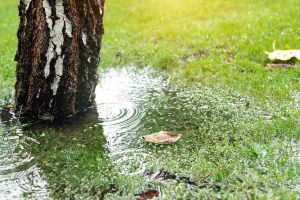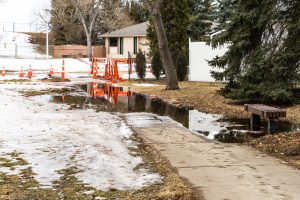
Flood Insurance 101: Preparing for Spring Thaw and Rainy Season
As winter fades and the first signs of spring emerge, the thawing snow and seasonal rains bring the beauty of renewal but also the risk of flooding. For many, the spring thaw and rainy season can be a time of anxiety, especially for homeowners in flood-prone areas. Understanding and preparing for these risks is crucial, and that’s where flood insurance comes into play. In this post, we’ll delve into the essentials of flood insurance and share valuable tips to prepare for the upcoming thaw and rainy season.

Understanding Flood Insurance
Flood insurance is a specific policy that covers property damage due to flooding, which is not typically covered under standard homeowners or renters insurance policies. It’s designed to protect your home and belongings from loss due to heavy rains, melting snow, storm surge, and overflowing rivers or lakes.
Why It’s Important
Many homeowners learn too late that their standard insurance policies do not cover flood damage. With changing climate patterns leading to more unpredictable and severe weather events, the importance of flood insurance has never been more evident. It provides a safety net that can help you recover faster and with less financial strain in the aftermath of a flood.
What It Covers
Flood insurance policies can cover both the structure of your home and its contents. This includes the foundation, electrical and plumbing systems, HVAC equipment, appliances, carpeting, and personal belongings such as clothing and furniture. It’s important to review your policy carefully to understand the limits and exclusions.

Preparing for Spring Thaw and Rainy Season
Assess Your Risk
Start by understanding your home’s flood risk. Use resources like the FEMA Flood Map Service Center to identify your property’s flood zone. This will help you make informed decisions about the level of flood insurance coverage you need.
Purchase Flood Insurance Early
There is typically a 30-day waiting period for flood insurance policies to take effect. Don’t wait for the snow to melt or the rainy season to start. Purchase or renew your policy well in advance to ensure you’re covered when you need it.
Safeguard Your Property
Take proactive steps to minimize potential flood damage:
- Elevate critical utilities: Raise electrical panels, heaters, and appliances above potential flood levels.
- Improve drainage: Clear gutters and downspouts, and consider installing a sump pump with a battery backup.
- Landscape wisely: Use native plants and terracing to prevent soil erosion and improve water absorption.
Prepare an Emergency Kit
Assemble an emergency kit with essentials such as water, non-perishable food, medications, flashlights, and important documents (including insurance policies) in waterproof containers.
Create an Evacuation Plan
Know your evacuation routes and have a plan in place for your family and pets. Staying informed about local emergency plans and flood alerts is also crucial.
After the Flood: Filing a Claim
Should you experience flooding, it’s important to act quickly to file a claim:
- Document the damage Take photos or videos of the damage before making any repairs.
- Notify your insurer: Contact your insurance company as soon as possible to start the claims process.
- Prevent further damage: Take steps to prevent further damage, but only if it’s safe to do so.
Conclusion
The spring thaw and rainy season bring the risk of flooding, but with the right preparation and flood insurance coverage, you can protect your home and peace of mind. Understanding your risk, purchasing insurance early, and taking preventive measures can make all the difference when facing the unpredictable nature of spring weather. Stay safe, stay informed, and ensure that you’re prepared for whatever the season may bring.
